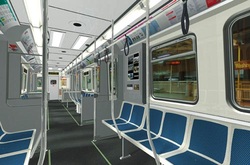

So it’s important to factor in the time to wait on multiple elevators.** Automatic Gates to Subway StationsĪll accessible stations should have at least one Autogate. In my station, I have to take 3 elevators to get to street level from the E train. ** Keep in mind most stations have multiple elevators to get from street level to the platform you need to be on. The great thing about the MTA trip planner is it has up-to-date information on which subway lines are running and which stations have functioning elevators! So make sure to check the box for Accessible Trip and hopefully there will be reasonable options available. It works like most map apps where you put in your start and end destination and it tells you the different routes to get there using public transportation. Just because the elevators worked on your way there does not mean they’ll still be working on your way back. Elevator status can change at any moment so if possible check the elevator status again before you make the trip back to wherever you were coming from. This page has the status of elevators and escalators on the Subway, Long Island Rail Road (LIRR), and the Metro-North Railroad (MNR). This is very important! Before you leave you should check to make sure the elevators you need to use are working. There is also this webpage that has a list of all accessible stations and if you go down to “Full Station List” it will tell you the cross street and corner where each elevator is located and any pertinent information about which line/direction the elevators go to and transfers. All versions do have the small wheelchair label next to accessible stations.

This page has up-to-date versions of the map including this one which clearly labels all the accessible stations.

The first thing you want to do is find a subway map (or skip to the trip planner). This travel guide to subways in New York will help you to prepare and create a plan to get around the city when using a wheelchair.


 0 kommentar(er)
0 kommentar(er)
